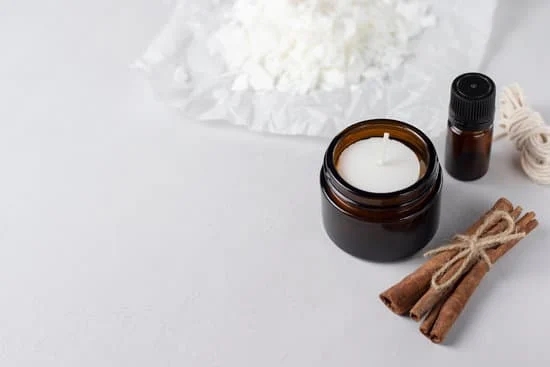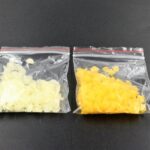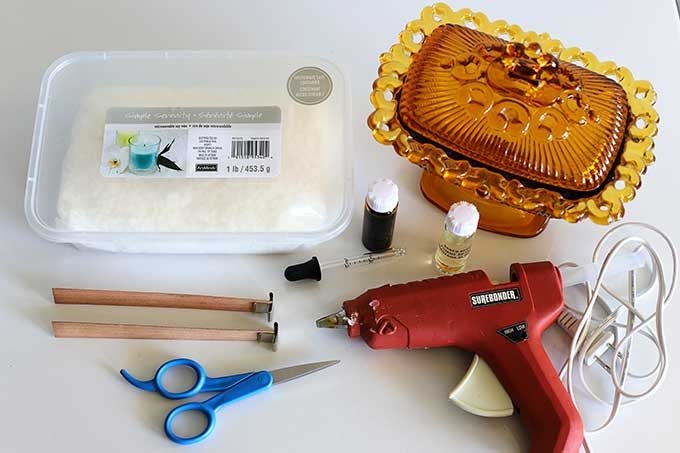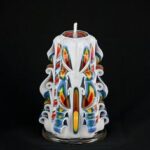Candle making, while a popular and enjoyable hobby for many, can quickly become an expensive pastime. Aspiring candle makers often underestimate the initial investment required to start creating their own candles at home. In this article, we will explore the costs associated with candle making and provide tips on how to save money without compromising on quality.
When diving into the world of candle making, it is important to understand the various expenses involved in this craft. From purchasing tools and materials to choosing quality ingredients, every aspect of candle making comes with its own price tag. By gaining a comprehensive understanding of these costs, you can make informed decisions about how to approach this hobby without breaking the bank.
Throughout this article, we will break down the initial investment required for tools and materials, discuss the importance of choosing high-quality ingredients for candle making, explore methods for calculating the total cost of creating your own candles, and provide valuable tips for saving money on supplies. Additionally, we will delve into the long-term value of candle making as a hobby and ultimately answer the question: Is candle making really an expensive hobby?
So join us as we uncover the truth behind the expenses associated with this beloved craft.
Understanding the Costs of Candle Making
Candle making is a popular hobby for people looking to express their creativity and create personalized gifts or home decor. However, one of the biggest concerns for those considering taking up this hobby is the cost associated with it. Understanding the costs of candle making is essential before diving into this craft, as it can help you make informed decisions about your investment in both time and resources.
The Initial Investment: Tools and Materials
When getting started with candle making, there is an initial investment required for purchasing tools and materials. This includes items such as wax, wicks, fragrance oils, dyes, containers, a thermometer, a pouring pot, and a scale. All of these supplies can add up quickly in terms of cost. Additionally, specialized tools like a melting pot and a heat source will also be necessary to properly melt the wax and ensure it reaches the correct temperature.
Choosing Quality Ingredients for Candle Making
One way to understand the costs of candle making is by considering the quality of ingredients used. While it may be tempting to opt for cheaper materials to save money in the short term, choosing higher-quality ingredients can lead to better results and longer-lasting candles. Better quality wax, fragrance oils, and wicks can not only improve the appearance and scent of your candles but also contribute to their longevity and burn time.
Calculating the Total Cost of Candle Making
It’s important to calculate your total cost when evaluating whether or not candle making is an expensive hobby. Factor in not only the initial investment but also ongoing expenses such as replacing tools or replenishing supplies like wax and fragrance oils. Consider how much each candle costs to produce, including overhead expenses like electricity and packaging materials. By understanding all these costs upfront, you can make informed decisions about whether candle making fits within your budget as a hobby.
The Initial Investment
When starting out with candle making, it is important to understand the initial investment required in terms of tools and materials. Here are some of the essential items that you will need to get started:
- Wax: The main ingredient in candle making, wax comes in various forms such as paraffin, soy, and beeswax. High-quality wax can be more expensive, but it is crucial for producing long-lasting and fragrant candles.
- Wicks: Choosing the right wick is essential for a successful candle. It’s important to select wicks that are suitable for the type of wax you are using and the size of the candle you want to make.
- Fragrances and Dyes: If you want scented or colored candles, you will need to invest in high-quality fragrances and dyes. While these may add to the initial cost, they can greatly enhance the final product.
- Melting Pot: A dedicated melting pot for your wax is necessary to melt and pour the wax into molds or containers. This allows for easy handling and prevents cross-contamination of scents or colors.
These initial investments can add up, making many beginners wonder if candle making is truly an expensive hobby. However, with careful planning and budgeting, it is possible to save money on these supplies without compromising on quality. By purchasing materials in bulk or availing discounts from suppliers, you can lower the overall cost of your candle making hobby significantly.
In addition, reusing materials such as molds and containers can also help cut down on expenses over time. With some savvy shopping and resourcefulness, candle making does not have to be an overly pricey pastime.
Choosing Quality Ingredients for Candle Making
When it comes to candle making, the quality of the ingredients used can greatly impact the final product. While it may be tempting to cut costs by purchasing cheaper materials, using high-quality ingredients is crucial for creating beautiful, long-lasting candles.
One of the most important aspects of candle making is choosing the right wax. There are various types of waxes available, including paraffin, soy, beeswax, and coconut wax. Each type of wax has its own unique qualities and it’s essential to select the one that best suits your needs. For example, soy wax is known for its clean burn and strong scent throw, while beeswax produces a natural honey-like aroma.
In addition to selecting the right wax, fragrance oils and dyes are also key components in candle making. It’s important to invest in high-quality fragrance oils that will provide a strong and lasting scent when the candle is burned.
Similarly, using high-quality dyes will ensure that the color of the candle remains vibrant and true to its intended shade. While opting for cheaper alternatives may seem like a good way to save money initially, it can ultimately compromise the overall quality and effectiveness of your candles.
| Ingredient | Importance |
|---|---|
| Wax | The type of wax used affects burn time and scent throw. |
| Fragrance Oils | High-quality oils provide a strong and lasting scent. |
| Dyes | Quality dyes ensure vibrant and true colors in the candles. |
Calculating the Total Cost of Candle Making
Candle making can be a fulfilling and rewarding hobby. However, it also comes with its own set of costs that need to be considered before embarking on this creative journey. The total cost of candle making includes not only the initial investment in tools and materials but also the ongoing expenses of purchasing supplies and ingredients. In this section, we will delve into calculating the true cost of candle making as a hobby.
Initial Investment
When getting started with candle making, there is an initial investment required for tools and materials. This includes purchasing a melting pot, thermometer, molds, wicks, fragrance oils, wax, dyes, and other essential items. The cost of these items can add up quickly, especially if you are opting for higher quality materials. It’s important to budget for this initial investment before diving into candle making as a hobby.
Ongoing Expenses
In addition to the initial investment, candle making also involves ongoing expenses for purchasing supplies and ingredients. Wax, fragrance oils, dyes, wicks, and containers all need to be replenished regularly depending on the frequency of candle making. These ongoing expenses should be factored into the total cost of candle making as they contribute to the overall expense of maintaining this hobby.
Total Cost Calculation
To calculate the total cost of candle making as a hobby, it is important to take into account both the initial investment and ongoing expenses. This includes keeping track of all purchases related to candle making over a period of time. By adding up the costs of tools, materials, supplies, and ingredients used for candle making, one can arrive at an accurate estimate of the total expenditure involved in pursuing this hobby.
Tips for Saving Money on Candle Making Supplies
When it comes to candle making, the costs can add up quickly. From tools and materials to quality ingredients, creating your own candles can be an expensive hobby. However, there are ways to save money on candle making supplies without sacrificing the quality of your creations.
Here are some tips for saving money on candle making supplies:
- Buy in bulk: Purchasing wax, wicks, and fragrance oils in bulk can help you save money in the long run. Look for wholesale suppliers or purchase larger quantities to reduce the cost per unit.
- Reuse and repurpose containers: Instead of buying brand new containers for your candles, consider reusing glass jars or tins from old candles or other household items. Not only does this save money, but it’s also a sustainable option.
- Shop for sales and use coupons: Keep an eye out for sales at craft stores or online suppliers. You can also sign up for newsletters or loyalty programs to receive exclusive discounts and coupons for your candle making supplies.
By implementing these cost-saving strategies, you can indulge in your love for candle making without breaking the bank. With a little creativity and savvy shopping, you can enjoy this fulfilling hobby without feeling the financial strain.
Remember that while candle making may initially seem like an expensive hobby, there are ways to be frugal and resourceful in your pursuit of creating beautiful and aromatic candles. With a bit of planning and smart shopping, you can continue enjoying this creative outlet without worrying about the cost.
The Long-Term Value of Candle Making as a Hobby
Candle making can be an expensive hobby, especially when it comes to the initial investment in tools and materials. However, the long-term value of candle making as a hobby is not solely measured by its cost. Many enthusiasts find that the benefits and rewards of candle making far outweigh the financial investment.
One of the long-term values of candle making as a hobby is the opportunity for creativity and self-expression. Creating unique, personalized candles allows individuals to explore their artistic side and craft custom-made products for themselves or as gifts for loved ones. This process can be incredibly fulfilling and provides a sense of accomplishment that extends beyond any monetary value.
Furthermore, engaging in candle making as a hobby can serve as a form of relaxation and stress relief. The act of melting wax, adding fragrances, and carefully pouring the mixture into molds can be quite therapeutic for many individuals. This hands-on activity provides an outlet for creativity and can help alleviate daily pressures, contributing to overall well-being.
In addition to these personal benefits, candle making can also have long-term value in terms of sustainability. By creating their own candles, enthusiasts have more control over the ingredients used, leading to environmentally friendly choices. Furthermore, reusing containers or repurposing old candles promotes sustainability by reducing waste. This aspect adds value to the hobby beyond its upfront costs and showcases its potential impact on environmental consciousness.
Conclusion
In conclusion, after understanding the costs and initial investment involved in candle making, one may wonder if it is truly an expensive hobby. While it is true that the initial investment for tools and materials can add up, and choosing quality ingredients may come with a price tag, there are ways to save money and eventually find long-term value in this craft.
When considering the costs of candle making, it’s important to remember that the initial investment is just that – an initial cost. With proper budgeting and resourcefulness, hobbyists can find ways to save money on supplies without compromising on the quality of their candles. From buying in bulk to repurposing household items as candle-making tools, there are numerous tips for cutting costs while still enjoying the creative process of making candles.
Ultimately, while some may see candle making as an expensive hobby at first glance, the long-term value of this craft cannot be overlooked. Not only can it be a source of artistic expression and personal satisfaction, but it also has the potential to become a fulfilling and even profitable venture.
For those passionate about candle making, the joy and satisfaction derived from creating unique, handcrafted candles often outweigh the initial costs, making it a valuable investment in creativity and self-expression.
Frequently Asked Questions
Is Candle Making an Expensive Hobby?
Candle making can be as expensive or inexpensive as you want it to be. The initial investment in supplies and equipment may seem costly, but once you have the basics, making candles can actually be quite affordable.
Why Is Candle Making So Expensive?
The cost of candle making can be attributed to various factors. Quality wax, fragrance oils, and wicks all contribute to the expense. Additionally, specialized equipment such as a double boiler and thermometer are needed for the process.
Is It Expensive to Make Your Own Candle?
Making your own candles can actually save you money in the long run. While there is an upfront cost for supplies like wax, fragrance oils, and wicks, once you have these on hand, you can make multiple candles from them. This makes each individual candle more cost-effective than buying them already made.

Welcome to my candle making blog! In this blog, I will be sharing my tips and tricks for making candles. I will also be sharing some of my favorite recipes.





